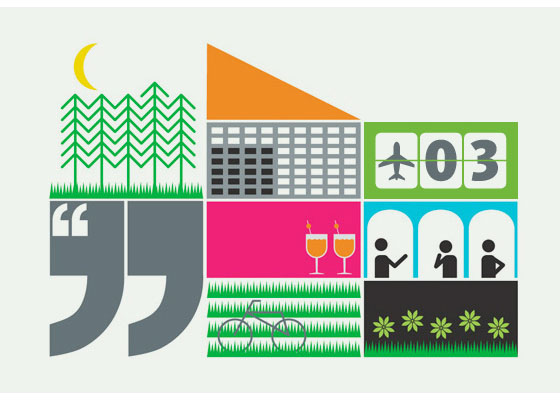Three Steps to Carbon-Neutral Airports: Step 3
 Nellie Reid
Nellie Reid Editor’s note: this is the third post of a three-part series. The first post, outlining opportunities to reduce the amount of energy that airports use, appears here; the second post, stressing the importance of using on-site, clean, renewable energy, appears here.
Purchase Offsets
Once you’ve optimized the energy performance of your facility and optimized the output of on-site renewable energy systems, you can offset the remainder of your facility’s carbon footprint through the purchase of carbon offsets. One form of offset is renewable energy credits (RECs). The more energy you save through efficient design and operations and the more energy you produce onsite through renewables, the fewer offsets you will need to purchase to reach carbon neutrality. Therefore, it is very important that these three steps be taken in sequence.
Track Performance
It is important to track actual performance to prove that the measures are yielding the desired results. The U.S. Environmental Protection Agency’s ENERGY STAR rating evaluates a building’s annual energy use against the average for that building type in that region. The U.S. Green Building Council’s Leadership in Energy and Environmental Design (LEED) rating system evaluates a project in five major categories: site, water, energy, materials and indoor environmental quality. There are other green building rating systems such as Building Research Establishment Environmental Assessment Method (BREEAM) in the UK, Comprehensive Assessment System for Built Environment Efficiency (CASBEE) in Japan and Green Star in Australia.
The Bright Side
Several airports are already incorporating energy efficiency measures and emissions reduction strategies. This is nothing new; it just has a stronger focus now when there are three big issues at hand: reducing operating costs, reducing carbon footprint and competitive advantage. Let’s take advantage of these drivers and make some significant changes in an industry where there is a huge opportunity for improvement.
Additional Resources:
U.S. Green Building Council’s LEED Rating System
UK’s BREEAM Rating System
Australia Green Building Council’s Green Star Program
Japan’s CASBEE Tools
Clean Airport Partnership
AIA 2030 Toolkit
 |
Nellie Reid is a Director of Sustainable Design for Gensler. She founded the Los Angeles chapter of the U.S. Green Building Council and served as board vice chair from 2004 to 2007. She also founded the A+D Sustainable Design Leaders Summit, a meeting of sustainable design leaders from 50 large architecture and design firms. Reid thinks that “sustainability should not just be a noble goal, but a core factor in all decisions.” Contact her at nellie_reid@gensler.com. |



Reader Comments (1)
Granted that the "green-ness" of such vehicles is partially dependent on the source of the electricity used to power them, but they still produce no exhaust emissions, are quiet (less noise pollution), and economical to operate.
Just wondered if the airport incorporated any electric vehicles in its plan?